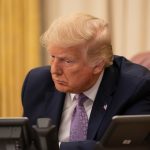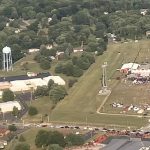The Secret Service’s recent performance at a rally for former President Donald Trump in Butler, Pennsylvania has raised eyebrows, particularly regarding a shooter who took to the skies with his own drone. Ronald Rowe, the acting director of the Secret Service, addressed Congress and lamented that if their counter-drone technology hadn’t faced significant technical hiccups, they might have intercepted the gunman before he ever had a chance to launch his attack.
The dramatic failings of the agency were spotlighted when it was revealed that cellular communication issues prevented the drone defense system from being operational until well after the gunman made his move. Documents obtained by Senator Charles E. Grassley showed that the Secret Service had a detailed plan ready to counter the aerial threats. However, instead of promptly addressing the situation, they tripped over their own technology, which subsequently delayed the response by nearly two hours.
Acting Secret Service chief Ronald Rowe blames agency’s faulty drone tech for missed chance to stop Trump shooterhttps://t.co/EZjPS4D0C8 pic.twitter.com/gqFP8yiWoP
— The Washington Times (@WashTimes) July 31, 2024
Rowe’s frank acknowledgment of his sleepless nights over the matter would be more reassuring if it weren’t for the fact that a government agency designed to protect the president of the United States apparently relies on shaky cellular networks for its operations. When pressed by Sen. Grassley, he could only murmur some vague plans to improve connectivity for future operations. It begs the question: why is a government agency backing its technology on a public network, anyway? Perhaps they were hoping for a 5G miracle, but instead they got a buffering icon.
The shooter was able to launch his drone at 3:51 p.m. and perform reconnaissance, while the Secret Service remained twiddling its thumbs, unable to respond effectively until after 5 o’clock. The timing suggests a comically tragic oversight in the agency’s preparations. They might as well have sent out a handwritten letter to the gunman, asking him politely to wait until the tech started functioning properly.
Now, as is often the case, the response to this blunder includes pledges to “leverage resources” from the Department of Homeland Security to ensure future operations run smoother than a government office during a holiday weekend. In a world where bad actors continually seek out vulnerabilities in national security, one would think the Secret Service could brainstorm a few backup plans that don’t involve a reliance on consumer-grade cellular signals.
The curtain has been pulled back on a troubling reality: one of the foremost protectors of American leadership couldn’t fend off a drone-wielding assailant due to inadequate operational technology. If this incident doesn’t serve as a wake-up call for policy changes and technological upgrades within the Secret Service, one can only hope they at least add a few extra cell towers around future rally sites. After all, defending the former leader of the free world should not be synonymous with playing hide-and-seek with drones.




